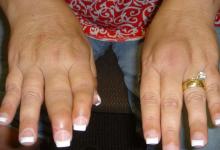Acetaminophen: No Effect in Osteoarthritis Pain or Function Save

A network analysis of multiple therapies used in osteoarthritis found that acetaminophen (paracetamol) does not meet the minimum standard of clinical effectiveness in reducing pain or improving physical function in patients with knee and hip osteoarthritis.
Researchers from Bern pooled data from 74 randomized trials published between 1980 and 2015, that analyzed data from a total of 58556 patients with osteoarthritis and compared the effect of 22 different medical treatments and placebo on pain intensity and physical activity. The 22 treatments included various doses of paracetamol and seven different NSAIDs. Although paracetamol was slightly better than placebo, researchers conclude that, taken on its own, paracetamol has no role in the treatment of patients with osteoarthritis, irrespective of dose.
The study is the largest analysis of randomised trials of medical pain relief for osteoarthritis to date, and finds that diclofenac 150mg/day, a non-steroidal anti-inflammatory drug (NSAID), is the most effective short-term pain relief. However, the authors caution against long-term use of NSAIDs because of known side-effects.
Worldwide, 9.6% of men and 18% of women over the age of 60 have osteoarthritis. Nearly 27 million adults in the USA and 8.75 million in the UK have osteoarthritis. Although acetaminophen and NSAIDs are first line treatments for pain management in osteoarthritis, paracetamol is used more frequently its safety advantage and lack of the long-term cardiovascular and gastrointestinal effects associated NSAID use.
While the analysis found that all 22 studied medications improved symptoms of pain compared with placebo, paracetamol had small effects on physical function and pain, the effect was only slightly better than placebo, and did not reach the minimum clinically important difference (effect size of –0.17 vs. clinically important difference of -0.37).
By comparison, diclofenac at the maximum daily dose of 150 mg/day was most effective for the treatment of pain and physical disability in osteoarthritis (effect size –0.57), and superior to the maximum doses of frequently used NSAIDs, including ibuprofen, naproxen, and celecoxib.
This analysis questions the reliance on a safer drug, acetaminophen, over NSAIDs. The latter were uniformly shown to be effective in OA, with full dose diclofenac being most effective.
In a commentary Professor Nicholas Moore concluded that “the most remarkable result is that paracetamol does not seem to confer any demonstrable effect or benefit in osteoarthritis, at any dose.”










If you are a health practitioner, you may Login/Register to comment.
Due to the nature of these comment forums, only health practitioners are allowed to comment at this time.